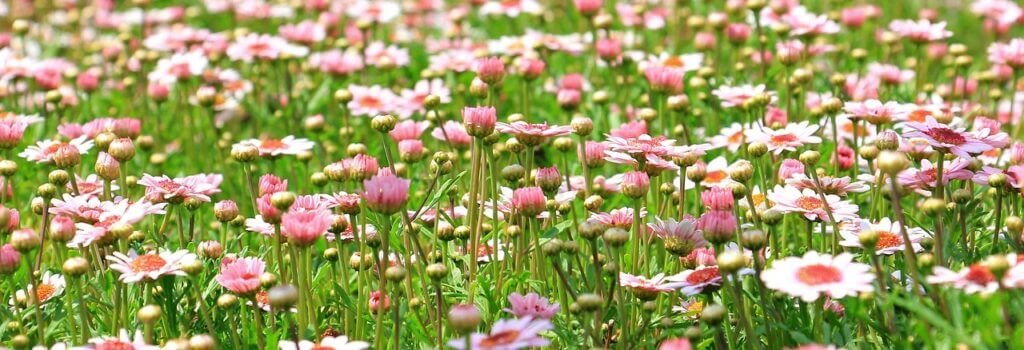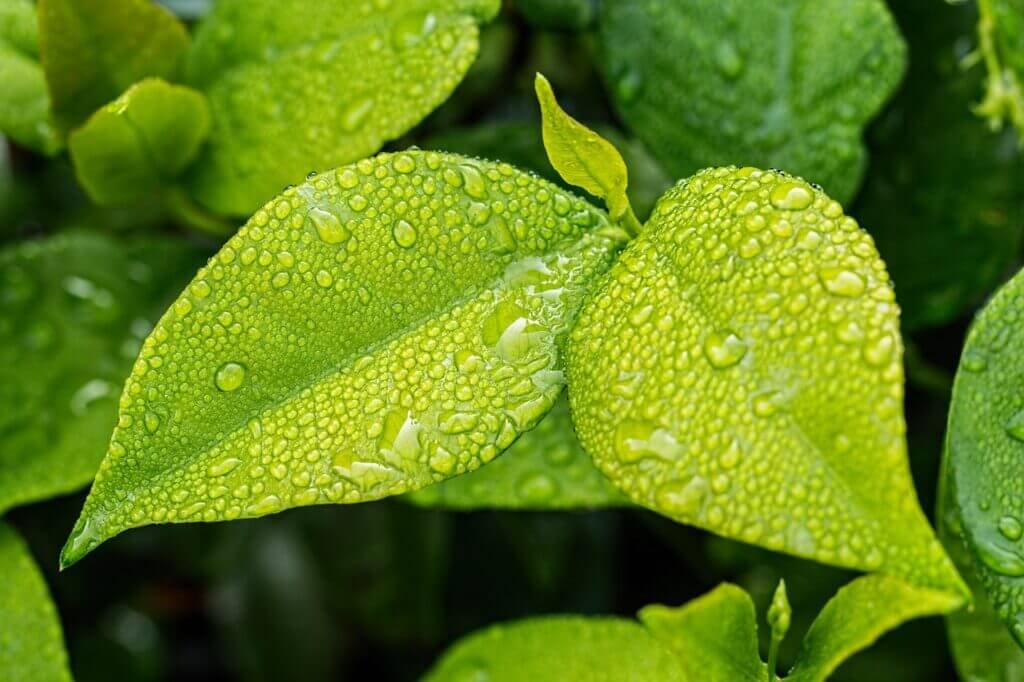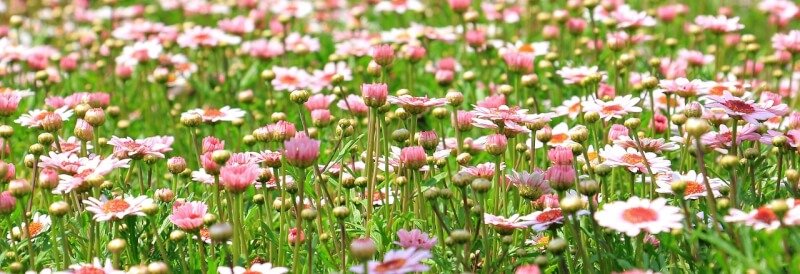In a bustling city garden, ensuring your plants receive the proper care and attention can be a challenge. With limited space and unpredictable environmental conditions, it’s crucial to establish the best practices for watering your beloved greenery. From understanding the unique needs of different plant species to creating a watering schedule that accommodates a busy urban lifestyle, this article will provide you with valuable insights and tips to help your city garden flourish. Discover how to keep your plants thriving and create a tranquil oasis in the heart of the concrete jungle.

Choosing the Right Watering Method
Consider the Needs of the Plants
When it comes to watering your plants in a city garden, one of the first things to consider is the specific needs of your plants. Different plants have different water requirements, and it’s important to take this into account. Some plants, like succulents, prefer drier soil and don’t need as much water, while others, like leafy greens, require more frequent watering. By understanding the needs of your plants, you can choose the most appropriate watering method and ensure that they thrive in your city garden.
Evaluate the Watering Requirements
Once you have a good understanding of the needs of your plants, it’s important to evaluate the watering requirements of your city garden as a whole. Factors such as the climate, soil type, and sun exposure will all impact how often and how much you need to water your plants. Taking the time to assess these factors will help you determine the best watering method and schedule for your specific garden.
Use Drip Irrigation Systems
One of the most efficient and water-saving methods of watering plants in a city garden is by using drip irrigation systems. Drip irrigation delivers water directly to the roots of the plants, minimizing water waste through evaporation and runoff. It also allows for slow and consistent watering, which is beneficial for plants as it encourages deep root growth. Drip irrigation systems are easy to install and can be customized to fit the layout of your garden, making them a convenient choice for city gardeners.
Utilize Soaker Hoses
Another effective watering method for city gardens is the use of soaker hoses. Similar to drip irrigation systems, soaker hoses deliver water directly to the base of the plants, minimizing water loss through evaporation. Soaker hoses are especially beneficial for larger plantings, such as vegetable gardens or flower beds. They can be easily connected to a timer or a rain barrel, allowing for automated and efficient watering. Soaker hoses are a cost-effective and low-maintenance option for city gardeners.
Understanding Watering Frequency
Follow a Regular Schedule
Establishing a regular watering schedule is essential for maintaining healthy plants in a city garden. By watering your plants at consistent intervals, you ensure that they receive an adequate amount of water without being overwatered. Take into consideration the specific needs of your plants and the weather conditions when determining your watering schedule. Consistency is key to avoiding drought stress or waterlogging in your plants.
Consider Weather Conditions
Weather conditions play a crucial role in determining the watering frequency of your city garden. During hot and dry periods, plants may require more frequent watering to prevent dehydration. On the other hand, during cooler and wetter seasons, you may need to adjust your watering schedule to avoid overwatering and potential root rot. It’s important to be mindful of the seasonal changes and adjust your watering accordingly to ensure the health and vitality of your plants.
Monitor Soil Moisture
Monitoring the moisture levels of your garden soil is a vital aspect of watering your city garden effectively. The easiest way to check soil moisture is by using your finger or a soil moisture meter to determine if the soil is dry or moist. Different plants have different preferences when it comes to soil moisture, so it’s important to be familiar with the specific requirements of your plants. By regularly checking the moisture levels, you can ensure that your plants are receiving the right amount of water and adjust your watering accordingly.
Adjust Watering According to Plant Growth
As your plants grow and develop in your city garden, their watering needs may change. Young seedlings or newly transplanted plants will require more frequent watering to establish their roots and promote growth. As they mature, their root systems become more efficient at accessing water, and their watering needs may decrease. Regularly assess the growth and development of your plants to make necessary adjustments to your watering routine and ensure their continuous health.

Watering Techniques for Different Plant Types
Watering Outdoor Flowers and Ornamentals
When it comes to watering outdoor flowers and ornamental plants in your city garden, it’s important to provide them with the right amount of water and choose the appropriate watering technique. Generally, these plants benefit from deep, infrequent watering to encourage deep root growth. Ensure that the water reaches the roots by directing it at the base of the plant, rather than spraying the leaves. This helps prevent leaf diseases and encourages stronger, healthier plants.
Watering Vegetable Gardens
Vegetable gardens in a city garden require a slightly different watering approach. Most vegetables prefer consistent moisture but not overly saturated soil. A combination of drip irrigation and mulching can be highly effective in vegetable gardens. Drip irrigation delivers water directly to the roots, and mulching helps retain moisture in the soil. Monitor the moisture levels closely and adjust watering frequency as needed to ensure proper growth and abundant harvests.
Watering Trees and Shrubs
Trees and shrubs in a city garden also have specific watering needs. These plants typically have deeper root systems and require less frequent watering. When watering trees and shrubs, it’s important to give them a deep and thorough soaking, allowing the water to penetrate the soil and reach the roots. Avoid shallow watering, as it encourages shallow root growth and makes the plants more susceptible to drought stress. A slow and deep watering method, such as drip irrigation or a soaker hose, is ideal for trees and shrubs.
Watering Potted Plants
Potted plants in a city garden require special attention when it comes to watering. The limited space of a pot means that the soil dries out more quickly compared to plants in the ground. To ensure the health of your potted plants, water them thoroughly until the water drains out of the drainage holes. This helps ensure that the entire root ball is hydrated. It’s important to keep an eye on the moisture levels and avoid letting the soil dry out completely. Consider using self-watering containers or placing saucers under potted plants to help retain moisture.
Mulching to Retain Moisture
Choose the Right Mulch
Mulching is a highly effective technique to retain moisture in your city garden. Choosing the right mulch for your plants is essential. Organic mulches, such as straw, shredded leaves, or wood chips, not only help conserve moisture but also provide additional benefits like weed suppression and soil insulation. Inorganic mulches like gravel or pebbles can also be used, especially in areas prone to erosion or where a decorative appearance is desired. Consider the specific needs of your plants and the aesthetics of your garden when selecting the appropriate mulch.
Apply Mulch Correctly
Proper application of mulch is key to maximizing its moisture-retaining benefits. Apply a layer of mulch around the base of your plants, making sure to leave a small gap around the stem or trunk to prevent rot. The mulch layer should be around 2-4 inches thick, depending on the type of mulch and the soil conditions. Avoid piling the mulch against the plants, as this can create a damp environment that promotes rot and disease. Mulching also helps regulate soil temperature and suppresses weed growth, making it a valuable addition to any city garden.
Refresh Mulch Regularly
Over time, mulch can break down and lose its moisture-retaining properties. It’s important to refresh your mulch regularly to ensure its effectiveness. At least once a year, inspect the mulch layer and add a fresh layer if necessary. This not only helps maintain moisture levels in your soil but also improves the overall appearance of your city garden. By keeping your mulch layer consistently maintained, you provide your plants with the best possible growing environment.

Conserving Water in City Gardens
Collecting Rainwater
One of the most sustainable ways to conserve water in your city garden is by collecting rainwater. Installing a rain barrel or a rainwater harvesting system allows you to capture and store rainwater for future use. This stored water can then be used to water your plants, reducing the need for municipal water. Collecting rainwater not only conserves a precious resource but also helps minimize water bills and reliance on external water sources.
Optimizing Watering Times
Choosing the right time to water your plants can also contribute to water conservation in your city garden. Watering early in the morning or late in the evening helps minimize evaporation and ensures that the water reaches the roots instead of evaporating in the heat. Avoid watering during the hottest part of the day when the sun is at its peak, as this can result in significant water loss. By optimizing watering times, you can make the most efficient use of water and maximize its benefits for your plants.
Grouping Plants with Similar Watering Needs
Another practical way to conserve water in your city garden is by grouping plants with similar watering needs together. By creating zones based on water requirements, you can avoid overwatering or underwatering certain plants. This allows you to water more efficiently, targeting specific zones rather than watering the entire garden uniformly. Grouping plants based on their water needs not only saves water but also promotes healthier plant growth by providing them with their preferred moisture levels.
Considering Xeriscaping Techniques
Xeriscaping is a landscaping technique that focuses on designing water-efficient gardens. By incorporating xeriscaping principles into your city garden, you can significantly reduce water usage. Choose native or drought-tolerant plants that are well-suited to your climate and require less irrigation. Arrange plants strategically based on their water needs and use techniques such as mulching, proper soil preparation, and efficient irrigation systems to minimize water requirements. Xeriscaping not only conserves water but also creates beautiful and sustainable landscapes in city gardens.
Dealing with Watering Challenges in City Gardens
Overcoming Watering Restrictions
At times, city gardens may face watering restrictions due to water conservation efforts or drought conditions. It’s important to be prepared and find alternative methods to provide your plants with the necessary water. Drip irrigation systems and soaker hoses are efficient ways to minimize water usage and comply with watering restrictions. If necessary, consider hand-watering your plants using a watering can or bucket to ensure they receive adequate water during restricted periods. Being creative and resourceful will help you overcome watering challenges and keep your city garden thriving.
Managing Runoff and Drainage Issues
In urban environments, city gardens often face challenges related to runoff and drainage. Excess water runoff can lead to water waste and cause erosion or damage to plant roots. To manage these issues, consider installing rain gardens or bioswales, which are designed to capture and absorb excess water. These features help prevent water runoff, replenish groundwater, and promote healthy plant growth. Additionally, check for and address any drainage issues in your garden by improving soil structure and implementing proper grading techniques. By effectively managing runoff and drainage, you can ensure that your city garden remains healthy and sustainable.
Preventing Water Waste
Water waste is a common challenge in city gardens. To prevent water waste, ensure that your irrigation systems are properly maintained and free from leaks. Regularly inspect hoses, sprinklers, and connections to identify any potential issues. Adjust your watering schedule and duration based on the needs of your plants and the current weather conditions. Use watering methods such as drip irrigation or soaker hoses that deliver water directly to the roots, minimizing evaporation and runoff. By being mindful of water usage and taking steps to prevent water waste, you can contribute to a more sustainable city garden.
Using Automated Watering Systems
Automated watering systems can be a valuable solution for managing watering challenges in your city garden. Timers and irrigation systems allow you to program and control the watering schedule, ensuring that your plants receive consistent and appropriate amounts of water. Automated systems can be set to water early in the morning or late in the evening, optimizing water usage and minimizing evaporation. Depending on your specific needs and garden size, you can choose from a wide range of automated watering options, from simple timers to advanced smart systems. Using automated watering systems not only saves time and effort but also promotes efficient water usage in your city garden.
Monitoring and Troubleshooting Watering Issues
Inspecting Plants for Signs of Stress
Regularly inspecting your plants for signs of stress is crucial for identifying potential watering issues in your city garden. Wilting, yellowing or browning leaves, and stunted growth can all be indicators of underwatering or overwatering. Pay attention to changes in your plants’ appearance and behavior, as these can help pinpoint any watering problems. By being observant and proactive, you can address watering issues early on and prevent further damage to your plants.
Identifying Common Watering Problems
Certain common watering problems can arise in city gardens, such as inconsistent watering, shallow watering, or overwatering. Inconsistent watering can lead to stressed plants and uneven growth. Shallow watering can result in weak root systems and plants that are more susceptible to drought stress. Overwatering can cause root rot and other plant diseases. By being aware of these issues, you can take the necessary steps to adjust your watering techniques, ensure proper hydration for your plants, and avoid common watering pitfalls.
Addressing Underwatering and Overwatering
Underwatering and overwatering are two common watering issues that can negatively impact your city garden. Underwatering can cause plants to wilt, exhibit slow growth, and develop brown or yellow leaves. To address underwatering, adjust your watering schedule to ensure your plants receive sufficient moisture. Overwatering, on the other hand, can lead to root rot, mold, and fungal diseases. To prevent overwatering, allow the soil to dry out between waterings and ensure proper drainage in your garden. By finding the right balance and addressing these watering issues, you can maintain the health and vitality of your city garden.
Adjusting Watering Techniques for Seasonal Changes
Seasonal changes can greatly affect the watering needs of your plants in a city garden. During the hot summer months, plants typically require more frequent watering to combat the heat and dry conditions. As the temperature cools down in the fall, plants may require less water. It’s important to adjust your watering techniques and schedule accordingly to provide your plants with optimal hydration based on the current season. Regularly monitor the weather conditions and the moisture levels in the soil to make informed decisions about watering your city garden throughout the year.
Providing Watering Assistance During Absences
Ask a Neighbor for Help
If you have plans to be away from your city garden for an extended period, it’s essential to arrange for someone to take care of watering your plants. Asking a neighbor, a friend, or a fellow gardener for assistance can provide peace of mind and ensure that your plants stay hydrated in your absence. Provide clear instructions on watering frequency and amount, and consider leaving a watering can or a hose readily accessible for easy use. By enlisting the help of others, you can ensure that your city garden continues to thrive even when you’re not there.
Using Self-Watering Containers
Self-watering containers are a convenient solution for providing hydration to your plants when you’re away from your city garden. These containers have a built-in water reservoir that slowly releases water to the plants’ roots as needed. Self-watering containers can be an effective option for potted plants, ensuring that they receive sufficient moisture without the need for daily watering. Before leaving, fill the reservoir with water, and the plants will be able to draw from it as needed. Self-watering containers offer a hassle-free way to keep your plants hydrated during your absence.
Hiring a Professional Gardener
If you anticipate being away from your city garden for an extended period or if you prefer not to rely on others for watering assistance, hiring a professional gardener can be a viable option. A professional gardener will have the expertise and experience to care for your plants in your absence, ensuring that they receive adequate water and attention. Discuss your specific requirements with the gardener and provide clear instructions on watering frequency and techniques. By entrusting your city garden to a professional, you can enjoy your time away knowing that your plants are in capable hands.
Installing Timers and Irrigation Systems
Timers and irrigation systems are valuable tools for providing consistent and automated watering assistance to your city garden when you’re not available. Timers can be easily attached to a hose or irrigation system and programmed to water your plants at specific times and durations. This ensures that your plants receive sufficient water, even if you’re not there to physically water them. More advanced irrigation systems, such as smart systems, can be controlled remotely through smartphone apps and offer customizable watering options. By installing timers or automated irrigation systems, you can keep your city garden well-hydrated, even when you’re away.
Ensuring Efficient Watering Practices
Avoid Overhead Watering
One efficient watering practice in a city garden is to avoid overhead watering whenever possible. Overhead watering, such as using a sprinkler, can result in water evaporation and wastage. Additionally, wetting the foliage of certain plants can increase the risk of diseases and fungal infections. By choosing watering methods that target the roots directly, such as drip irrigation or soaker hoses, you can minimize water loss and promote healthy plant growth in your city garden.
Water in the Morning
Watering your plants in the morning is generally the most efficient time of day. The cooler morning temperatures and lower wind speeds reduce evaporation, ensuring that the water reaches the plants’ roots before it can disappear. Watering in the morning also allows the foliage to dry before the evening, which helps prevent diseases caused by prolonged moisture. By making it a habit to water your city garden in the morning, you optimize the efficiency of water usage and ensure the well-being of your plants.
Prevent Water Evaporation
To maximize water efficiency in your city garden, take steps to prevent water evaporation. One way to achieve this is by mulching, as mentioned earlier. A layer of mulch acts as a protective barrier, reducing evaporation by shading the soil and retaining moisture. Additionally, avoid watering during the hottest part of the day, when evaporation rates are highest. By being mindful of water evaporation and taking measures to minimize it, you can make the most efficient use of water in your city garden.
Avoid Watering Leaves
When watering your plants, it’s important to avoid watering the leaves whenever possible. While it may be more convenient to water from above, wetting the foliage can lead to diseases and fungal infections. Aim to water directly at the base of the plants, focusing on the root zone. This ensures that the water reaches the roots where it’s needed the most. By avoiding leaf wetting, you maintain a healthier and disease-free environment for your plants in your city garden.
Overcoming Watering Challenges in Small Spaces
Utilizing Vertical Gardening Techniques
In a small city garden, space is often a constraint. Vertical gardening techniques offer a solution to maximize the use of limited space. Vertical gardens allow plants to grow upwards, utilizing walls, trellises, or hanging structures. When it comes to watering vertical gardens, using drip irrigation or vertical systems with built-in watering capabilities ensures that each plant receives adequate water without wastage. Incorporating vertical gardening techniques in your city garden allows you to grow a variety of plants in a small space while optimizing watering efficiency.
Choosing the Right Containers
When gardening in small spaces, selecting the right containers is crucial for efficient watering. Choose containers with proper drainage holes to prevent waterlogging and root rot. Additionally, consider using self-watering containers, which have a reservoir that provides water to the plants as needed. Self-watering containers help maintain consistent soil moisture levels and minimize water waste. Moreover, grouping containers with similar watering requirements together can help streamline your watering routine and ensure efficient water usage in your city garden.
Amending Soil for Improved Water Retention
The soil composition in small city gardens can greatly impact water retention. Amending the soil with organic matter, such as compost or well-rotted manure, improves its ability to retain moisture. Adding organic matter helps create a more porous soil structure, allowing for better water absorption and retention. This reduces the frequency of watering, as the soil can hold onto water for longer periods. By amending the soil in your small city garden, you create an optimal growing environment that conserves water and promotes healthy plant growth.
Applying the Right Amount of Water
In small spaces, it’s important to apply the right amount of water to avoid overwatering or underwatering your plants. The limited space of containers or small beds means that excess water can quickly accumulate, damaging the plants’ root systems. To prevent overwatering, water until you see water draining out of the bottom of the container or until the top few inches of the soil feel moist. On the other hand, underwatering can lead to stressed and unhealthy plants. Monitor the moisture levels closely, and adjust your watering frequency based on the specific needs of your plants in your small city garden.
In conclusion, watering your plants in a city garden requires careful consideration of their specific needs, the watering requirements of your garden as a whole, and the use of appropriate watering methods. By evaluating the needs of your plants, adjusting watering frequency based on weather conditions and plant growth, and utilizing efficient watering techniques such as drip irrigation and soaker hoses, you can ensure the health and vitality of your city garden. Additionally, mulching to retain moisture, conserving water through practices like rainwater collection and xeriscaping, and addressing watering challenges with innovative solutions help promote sustainability in your city garden. By monitoring and troubleshooting watering issues, providing watering assistance during absences, and adopting efficient watering practices, you can maintain an optimal growing environment for your plants in small spaces and overcome the unique challenges of city gardening.


